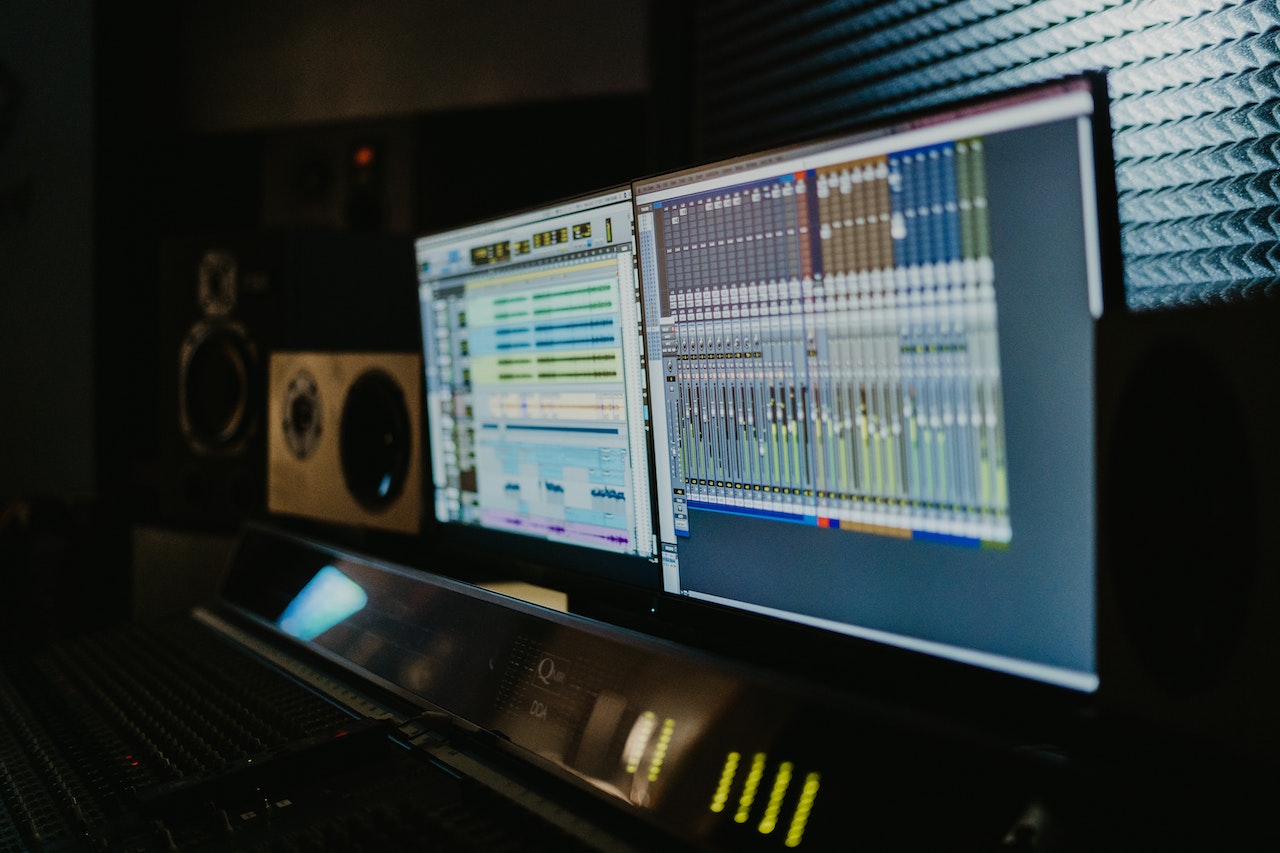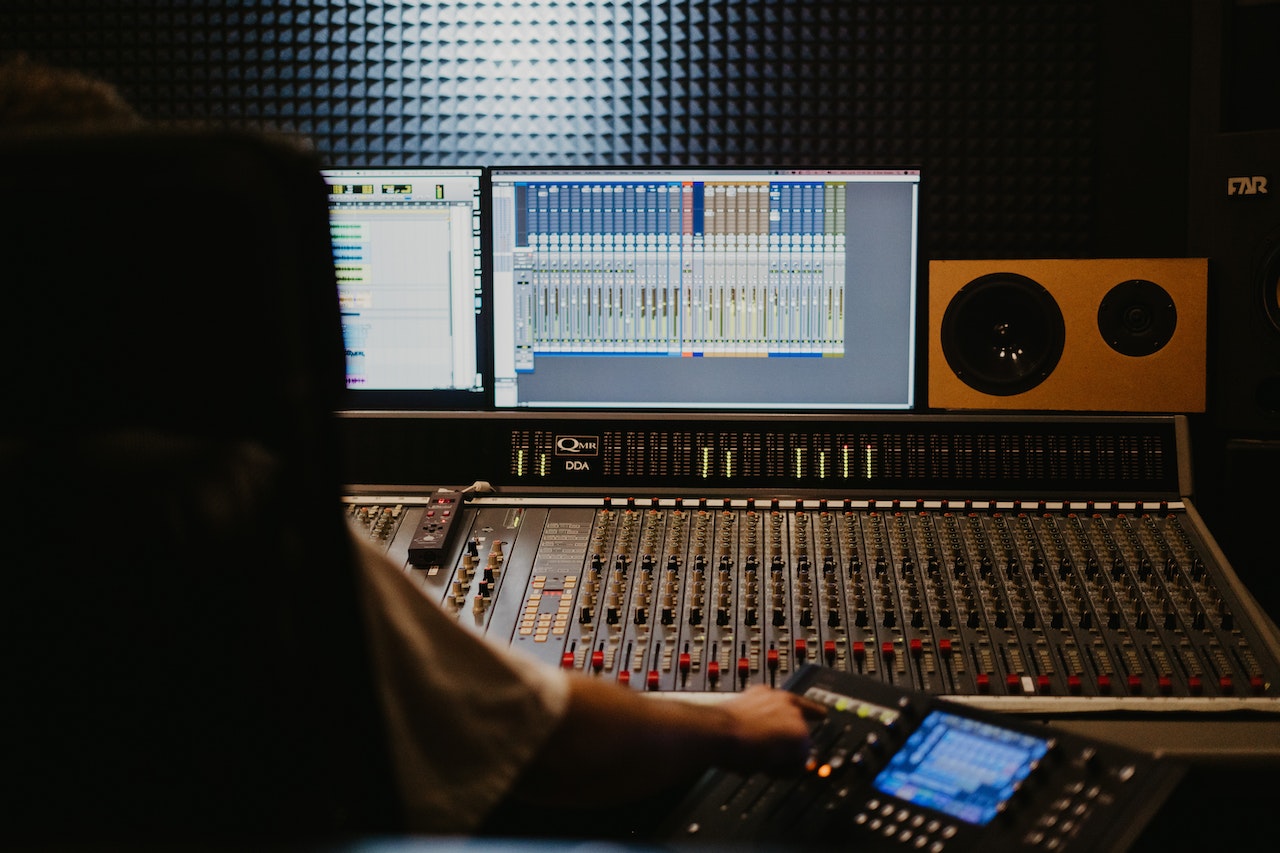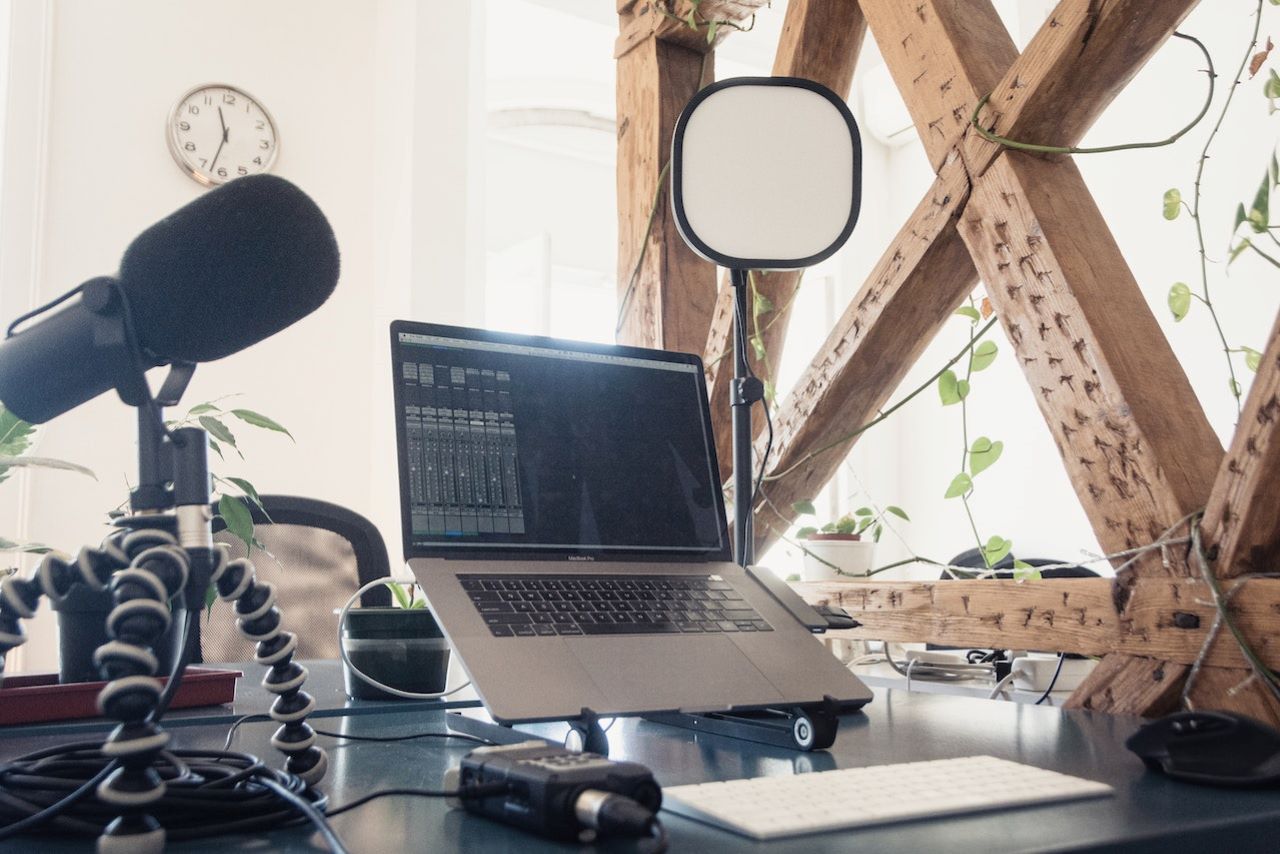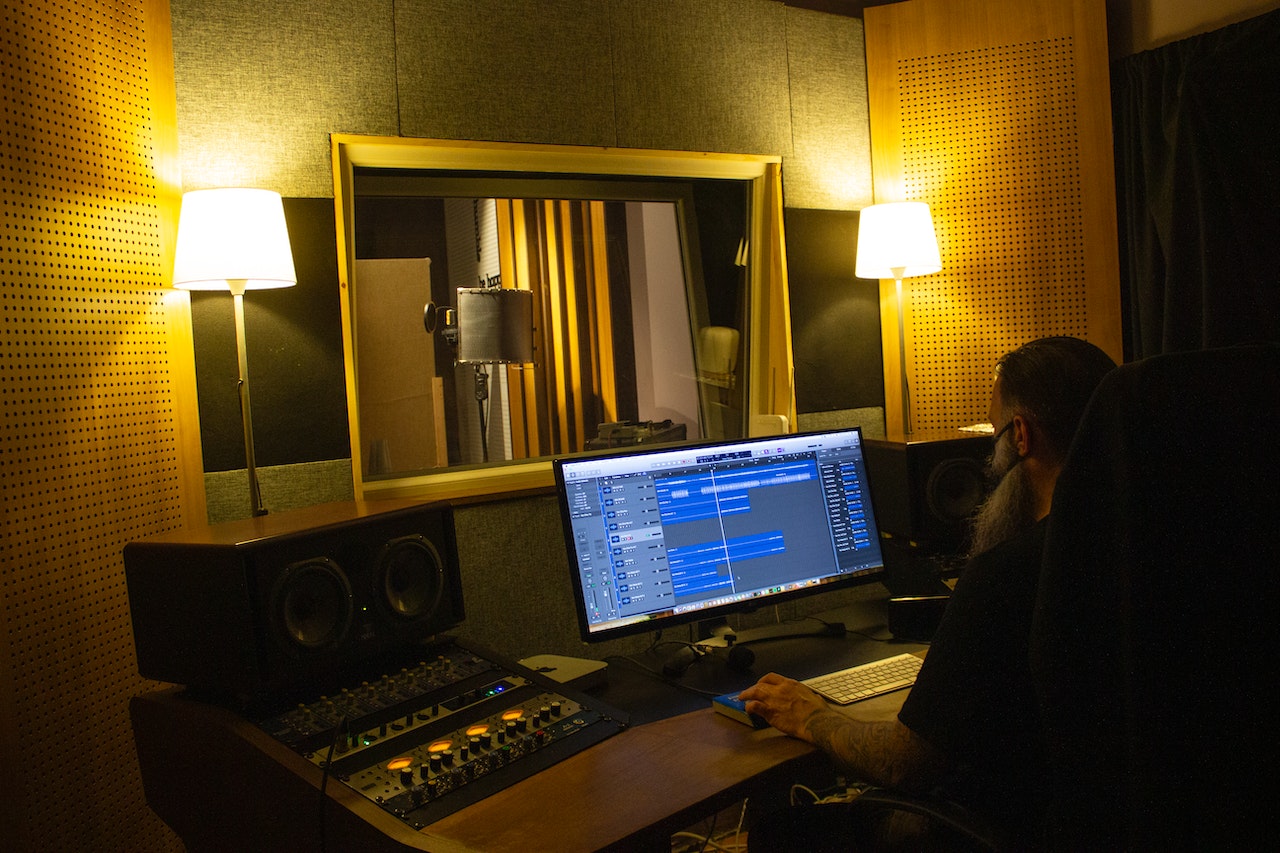Are you looking to take your podcasting journey to the next level? Have you ever found yourself thinking you’ve crafted the perfect episode, only for it to be overshadowed by a few technical mishaps? Say no more.
We’re here to unveil some of the most effective Logic Pro editing tips to supercharge your podcast production. Whether you’re just getting started or you’re a podcasting veteran, these audio editing tips will always come in handy. Ready? Let’s jump in!
Related: Best Podcast Editing Software
Contents
Deciphering The Logic Pro Interface
Sure, the interface might seem a bit daunting initially. But with some patience and guidance, navigating Logic becomes a breeze. The interface is your portal to world-class audio production.
Main Window Breakdown
When you first open Logic Pro, the main window presents itself as the hub of your podcasting activities; think of it as the control center where you can access all the tools and features needed to produce your show. Let’s explore its essential components.
- The Tracks Area: Consider this your storyboard. This is where you’ll line up your interviews, background music, and sound effects. Labeling tracks will save you a lot of headaches during the editing audio phase.
- The Control Bar: This is your command center! From here, you manage playback, recording settings, and project details. Also, the ability to customize control bar can be crucial for many Logic users, ensuring a more personalized workflow.
- The Library: Hunting for that perfect jingle or background music? The library has a plethora of options for you.
- Smart Controls: These controls allow for fine adjustments to your audio file editor, helping you achieve the perfect sound.
- The Mixer: Your audio balancing hub. It’s essential for ensuring that music doesn’t drown out dialogue or that one voice isn’t louder than another.
Navigation Made Easy
Logic Pro X’s vast options might feel overwhelming, but with our pointers, you’ll find your way around seamlessly.
- Zoom Functions: Use the Zoom slider for broader adjustments. For finer control, key commands like Command-Left Arrow and Command-Right Arrow are essential.
- Screensets: Transitioning between heavy audio editing and sound balancing? Save your preferred views as Screensets for quick switches.
- “Help” Tag Function: A quick hover over any tool will give you a brief overview of its function. Like having a Logic mentor beside you!
Efficient Podcast Editing
Podcast editing requires precision, and Logic Pro’s audio tools are packed with features that facilitate this.
Working With Audio Regions
Audio regions are the building blocks of your podcast. They represent sections of your audio files, be it an interview, intro music, or any other segment. By mastering region manipulation, you’ll achieve amazing editing feats. Let’s delve into the specifics.
- Trimming and Joining: To trim, drag the edges of an audio region. To join multiple sections, select and use the ‘Join Regions’ option. And always back up your project before major edits.
- Looping Regions: Need specific background music to repeat or a sound effect to loop? Drag the loop corner. It’s that easy!
- Non-destructive Editing: The beauty of Logic Pro is that you can make countless edits without altering the original audio. Edit without any reservations!
Enhancing Vocal Quality
Interviews or monologues might sometimes need tweaks for clarity and professionalism.
- Flex Time: Use Flex Time to adjust the timing of segments without changing pitch. Perfect for aligning misaligned tracks or fine-tuning segments.
- Flex Pitch: Need to correct pitch in a jingle or a song snippet? Flex Pitch is the answer. But always aim for subtle adjustments for authenticity.
Logic Pro Editing Tips [Streamlining Your Editing Process]
Efficiency is crucial, especially when you have tight schedules or frequent episodes.
Key Commands & Shortcuts
Speed and efficiency are critical in podcast editing. The quicker you can perform tasks, the more time you can spend on content and creativity. Key commands and shortcuts aren’t just about speed; they also reduce repetitive strain and improve your overall workflow. Here’s how to make the most out of them.
- Default Key Commands: Familiarize yourself with the basics: Command-Z for undo, Spacebar for play/pause. But there’s a trove of Logic-specific shortcuts waiting for you.
- Custom Key Commands: Customize commands to fit your unique workflow.
Track and Region Automation
Automation is about adding life and dynamics to your podcast. It can ensure that your music fades out just as your guest starts speaking or that certain segments are highlighted with a touch more volume. Grasping automation means you’re in total control of every audio detail. Let’s dive into the techniques.
- Automation Modes: Understanding the different automation modes like Latch and Write can help you manage volume, background music, and sound effects with finesse.
- Smooth Automation Curves: Properly timed fades and transitions can elevate your podcast’s professional feel.
Leveraging Logic Pro’s In-Built Tools
Going beyond basic edits? Logic Pro offers advanced tools to make your podcast stand out.
- Logic’s Advanced Quantization: Ensure your background tracks and jingles have a cohesive rhythm across episodes.
- Audio Effects And Processing: Reverb, Compression, EQ. Using these tools judiciously can add depth, clarity, and punch to your audio.
Logic Pro Editing Tips [Troubleshooting Common Editing Challenges]
Editing a podcast in Logic Pro is generally a pleasant experience, but every so often, you might run into challenges. The hurdles usually manifest as audio glitches or synchronization problems. These can compromise the listening experience, making your podcast seem less professional. Thankfully, Logic Pro is equipped with tools to help you address these issues.
Managing Audio Glitches
Every podcaster, no matter how seasoned, will at some point grapple with unwanted noises. Here’s a deeper dive into how to identify and rectify these disturbances:
Detecting Unwanted Noise
- Fact: Ambient noise, like a humming air conditioner or distant traffic, can add 10-15dB of unwanted sound.
- Solution: Use Logic Pro’s Spectrum Analyzer to visually identify frequency spikes. These spikes often indicate unwanted noise. Once detected, the Noise Gate tool can help isolate and remove these disturbances, maintaining audio clarity.
Fixing Clicks, Pops, and Artifacts
- Fact: Clicks and pops can result from abrupt starts or stops in an audio waveform, sometimes producing a 5-10dB spike in a millisecond.
- Solution: Logic Pro’s Fade Tool can be used to smooth out these abrupt transitions. For more stubborn artifacts, the Spot Eraser tool or the Clip Distortion effect can help minimize or eliminate these unwanted sounds.
Reducing Echoes and Room Noise
- Fact: Unintended echoes can arise if the recording environment isn’t acoustically treated, leading to a potential 10-20ms delay in sound reflections.
- Solution: Use the Enveloper tool in Logic Pro. It can help suppress the tail end of audio clips, reducing the effect of echoes. For further reduction, consider the Space Designer reverb plugin to simulate a more appropriate room sound.
Synchronizing Multi-Track Recordings
When recording multiple sources simultaneously, alignment is imperative. A delay as small as 20ms between tracks can be perceptible to the human ear, leading to a jarring listening experience.
Aligning Tracks
- Fact: When different tracks (like voice and sound effects) aren’t synchronized, there can be noticeable misalignments, even if they’re just a few milliseconds apart.
- Solution: In Logic Pro, you can use the Flex Time feature. This tool allows you to visually align waveforms from different tracks, ensuring synchronization. For quick alignments, use the Synchronize option under the Region menu to automatically match tracks.
Phase Issues
- Fact: When two microphones record a similar sound source and are not correctly aligned, they can produce an out-of-phase audio signal, leading to a hollow or thin sound.
- Solution: Within Logic Pro, the Invert Phase option on the mixer channel strip can help correct this. Additionally, the Correlation Meter can visually assist podcasters in spotting potential phase issues between tracks.
With these solutions at your fingertips, you can ensure that your podcast retains a polished and professional sound. Remember, while Logic Pro offers powerful tools, it’s equally essential to develop an attentive ear to identify and correct potential issues during the editing process.
FAQs
Is Logic Pro Good For Audio Editing?
Absolutely! Logic Pro is renowned as one of the leading digital audio workstations (DAWs) on the market, not just for music production but also for detailed audio editing. With its comprehensive suite of tools, plugins, and effects, it offers immense flexibility for professionals and hobbyists alike.
Its intuitive interface, combined with advanced editing features like Flex Time, Flex Pitch, and Smart Tempo, makes it a top choice. Additionally, its vast library of built-in sounds and the ability to integrate third-party plugins make it adaptable for various audio editing tasks.
How Does Logic Pro Compare To Other DAWs For Podcasting?
Logic Pro stands out for several reasons when it comes to podcasting:
- Streamlined Workflow: Logic Pro offers a template specifically designed for podcasters, simplifying the initial setup process.
- Multitrack Recording: This is invaluable for podcasters who have multiple hosts or guests, ensuring separate audio processing for each voice.
- Audio Restoration Tools: Logic Pro’s suite of plugins can clean up and enhance voice recordings, making it easy to manage noises, pops, or hisses.
- Value for Money: While Logic Pro isn’t the cheapest DAW, its one-time purchase offers a wealth of features that other subscription-based DAWs might lack.
While there are other fantastic DAWs like Adobe Audition or Pro Tools that podcasters use, many find Logic Pro’s balance of features and price to be particularly appealing.
Can I Integrate Third-party Plugins With Logic Pro?
Yes, Logic Pro supports both Audio Units (AU) and the newer Audio Units v3 (AUv3) formats. This means you can expand its already comprehensive toolkit with third-party plugins, be it for noise reduction, specialized EQs, or advanced dynamics processing. To ensure a smooth integration, always verify that the third-party plugin is compatible with your version of Logic Pro and macOS.
What Hardware Is Recommended For The Best Experience With Logic Pro?
While Logic Pro is optimized for Mac computers, the experience can vary based on the hardware used. For podcasters, the following are recommended:
- Mac Model: A recent MacBook Pro, iMac, or Mac mini with at least an i5 processor for efficient processing.
- Memory: A minimum of 8GB RAM, but 16GB is recommended for handling larger projects or multiple plugins.
- Storage: An SSD (Solid State Drive) is preferred over HDD (Hard Disk Drive) for faster load times and better overall performance.
- Audio Interface: A quality audio interface, such as those from Focusrite or PreSonus, ensures clear audio recording and playback.
- Microphone: Investing in a good quality condenser or dynamic microphone can make a significant difference in audio clarity.
As with all software, keeping your Mac’s operating system and Logic Pro updated ensures optimal performance and access to the latest features.
Related: Podcast Starter Kit
Conclusion
So, there you have it: a comprehensive guide to podcast editing magic with Logic Pro. While these tools are indispensable, always remember that your unique voice and content are what truly resonates with your audience. Continue experimenting, refining your craft, and, most importantly, keep the conversations flowing!




